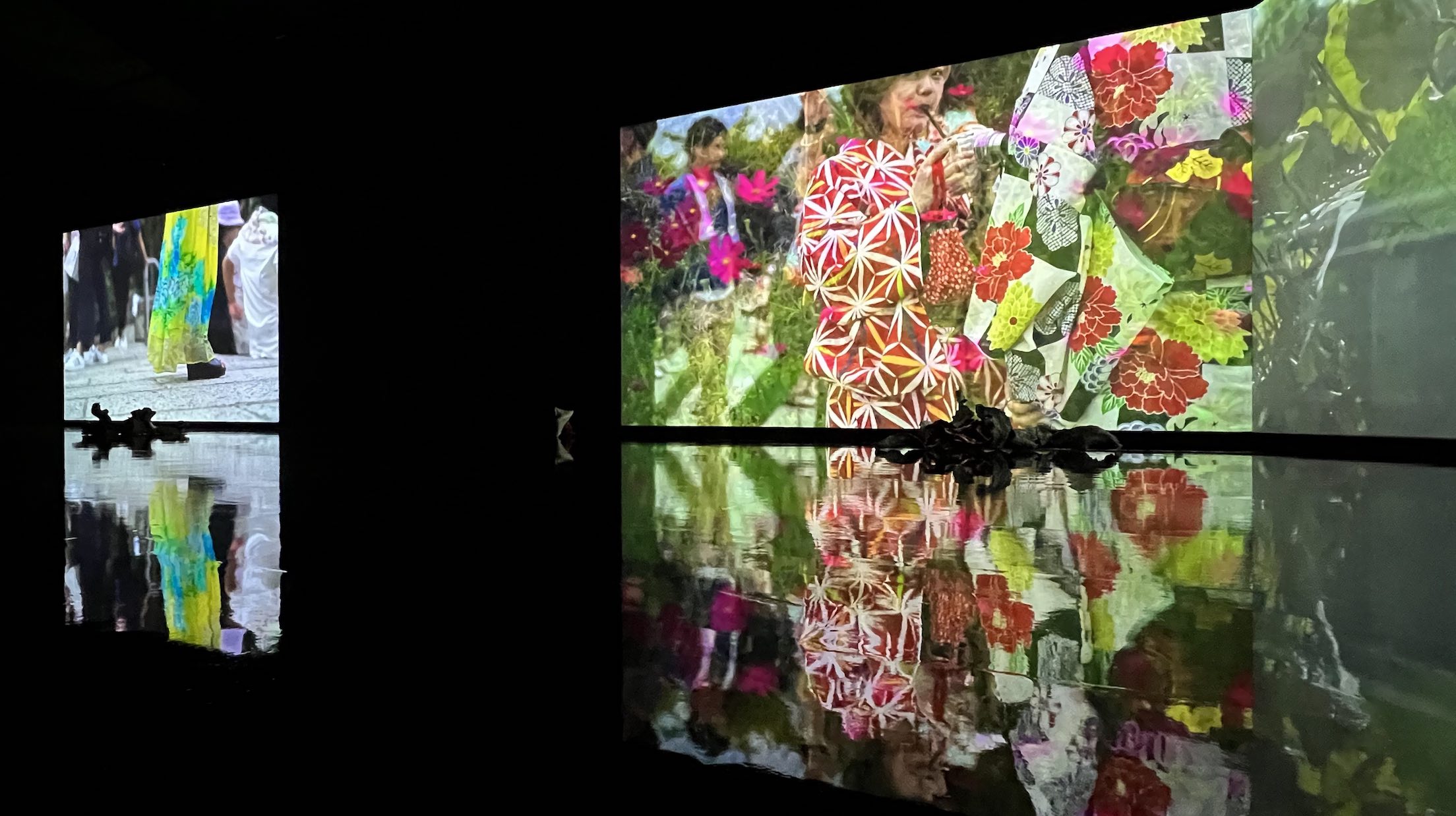
Review
Stitches of an Invisible Body: Erick Meyenberg
by Antonia Alarcón
Things We Do For Love at Arte Abierto
Reading time
5 min
All love is urgent because we are going to die.
Raúl Zurita
“In order to let pass the pain of a broken heart, you can take paracetamol.” This is one of the jewels of wisdom navigating among the paramedics of the Red Cross, who come day and night in order to treat the ailments traversing this city’s bodies. Allergies, medicines, conditions are all guides for evaluating a patient’s symptoms. A broken heart is like a fever and so we can treat it. The remedy is doubled when your paramedic friend is the one who gives you the paracetamol, with her hand on your shoulder and the whole night for shooting the breeze about emotional fractures.
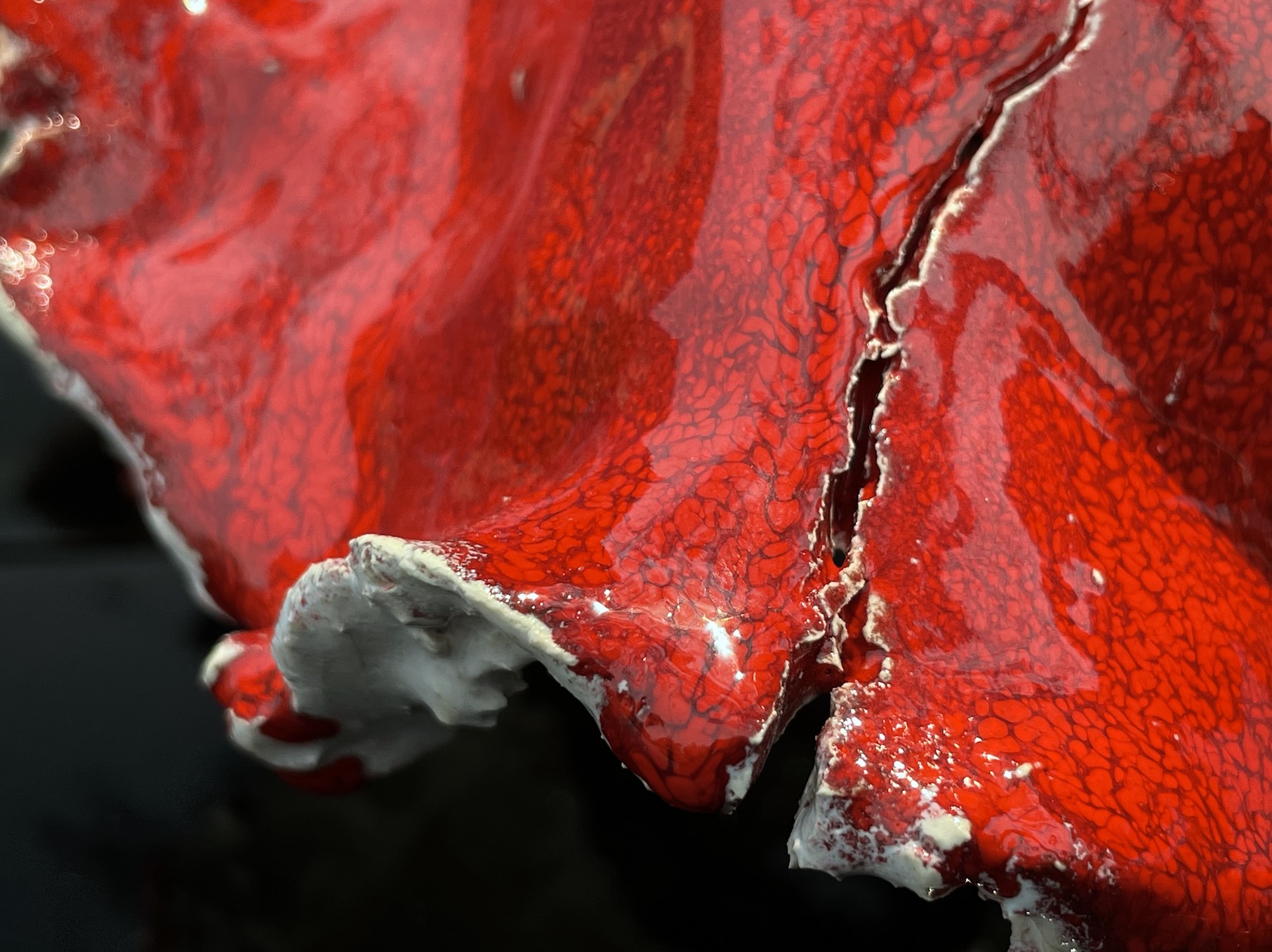
Things We Do For Love by Erick Meyenberg is an installation made up of a multi-channel video piece on five screens. Among these projections rest the giant petals of a ceramic chrysanthemum; they inhabit the space like something floating on a black lake. The piece’s conception was developed when Meyenberg traveled to Japan to carry out an art residency, filming those situations that he would come across in his day-to-day. At the same time, the artist was going through a personal mourning. Thus, the piece began to be articulated as layers of reflection accompanying his process of inner healing, through the beauty registered by the most mundane gestures in the world. Via the superimposition of images, we find gardeners, flowers, paramedics, lakes, and fishers navigate the screens, as though inserting us into Meyenberg’s memory. In the altered dimensions of the giant projections, we become those passing molecules that contemplate the reflection of a cat in a cemetery or the breathing of lotuses. As viewers we look on from the edges, inhabiting in silence, trying to imitate the soft behavior of the non-human.
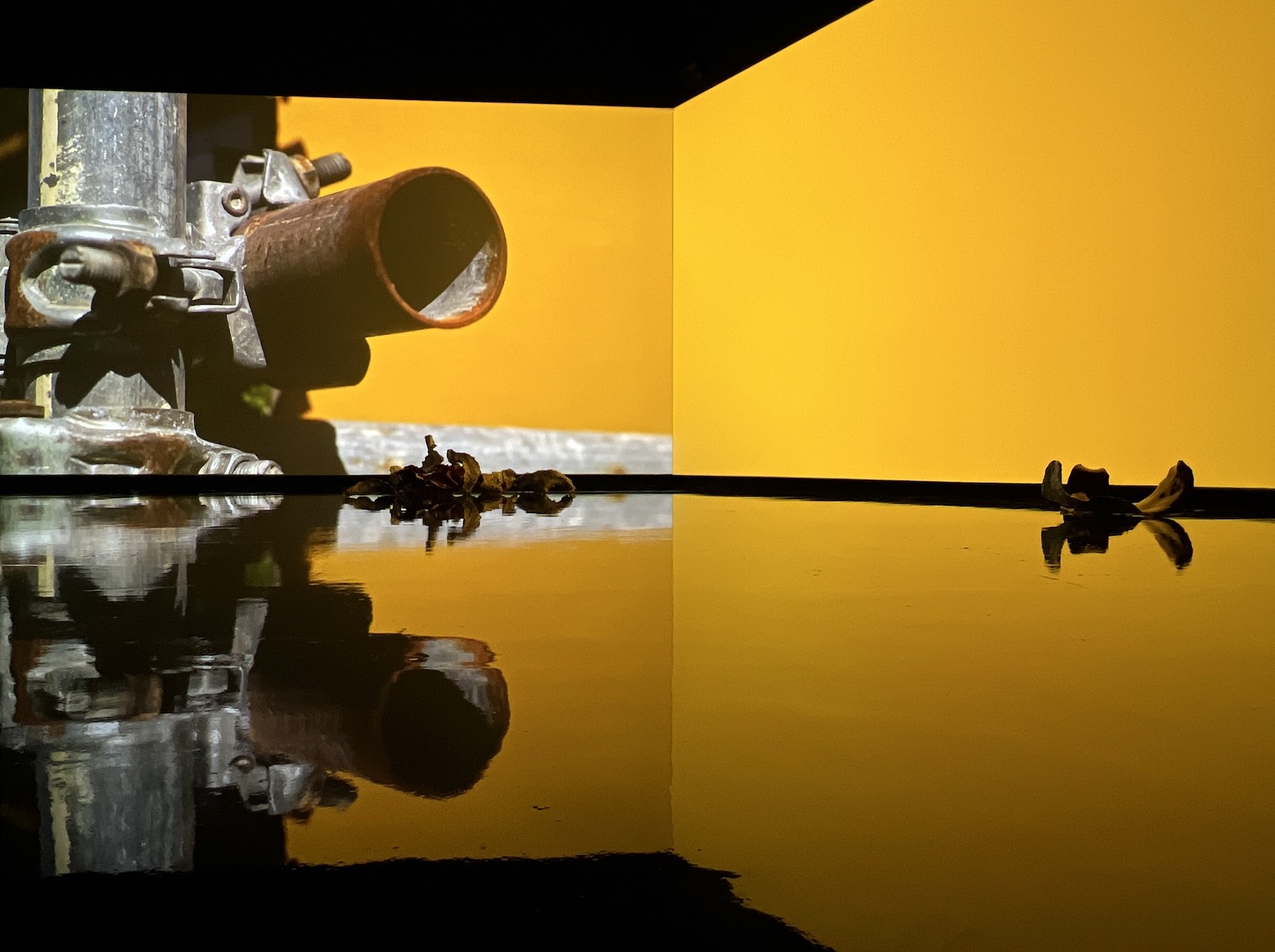
Healing implies the idea that there is a wound. Meyenberg takes up the Japanese practice of kintsugi, a pottery tradition in which a broken piece is repaired by attaching it together using gold leaf. In this practice, instead of hiding the details of such a break, they rather stand out as beautiful. Here using the camera, the artist makes himself out of the pieces in order to tell a personal story. This eye-camera that manages to see the beauty of insignificant gestures via the frame. Then, it is through editing that memories are rearticulated. Under the premise that the images are dislocated, only the editing’s stitches allow them to come together to create a third thing that exists in the viewer alone. Using montage, the wound is healed with narration—the sewing of the images in the mind—the splicing of emotions in the body. In Things We Do For Love, video and memory operate like a broken vessel in which the wounds are spaces of light through which we can glimpse the substance moving under the images.
“I was going through a personal moment that made everything look fragmented. And, as in any process, intuition and chance guided the way.” Upon entering the exhibition, we are greeted by a text/testimony in which the artist recounts his process firsthand. In it, Meyenberg tells us about his reflections and how he involved his friends*1 in carrying out the different parts of the piece: which is, finally, what all creators do in order to make sense of our artistic practices. Friendship is one of our pieces’ essential glues.
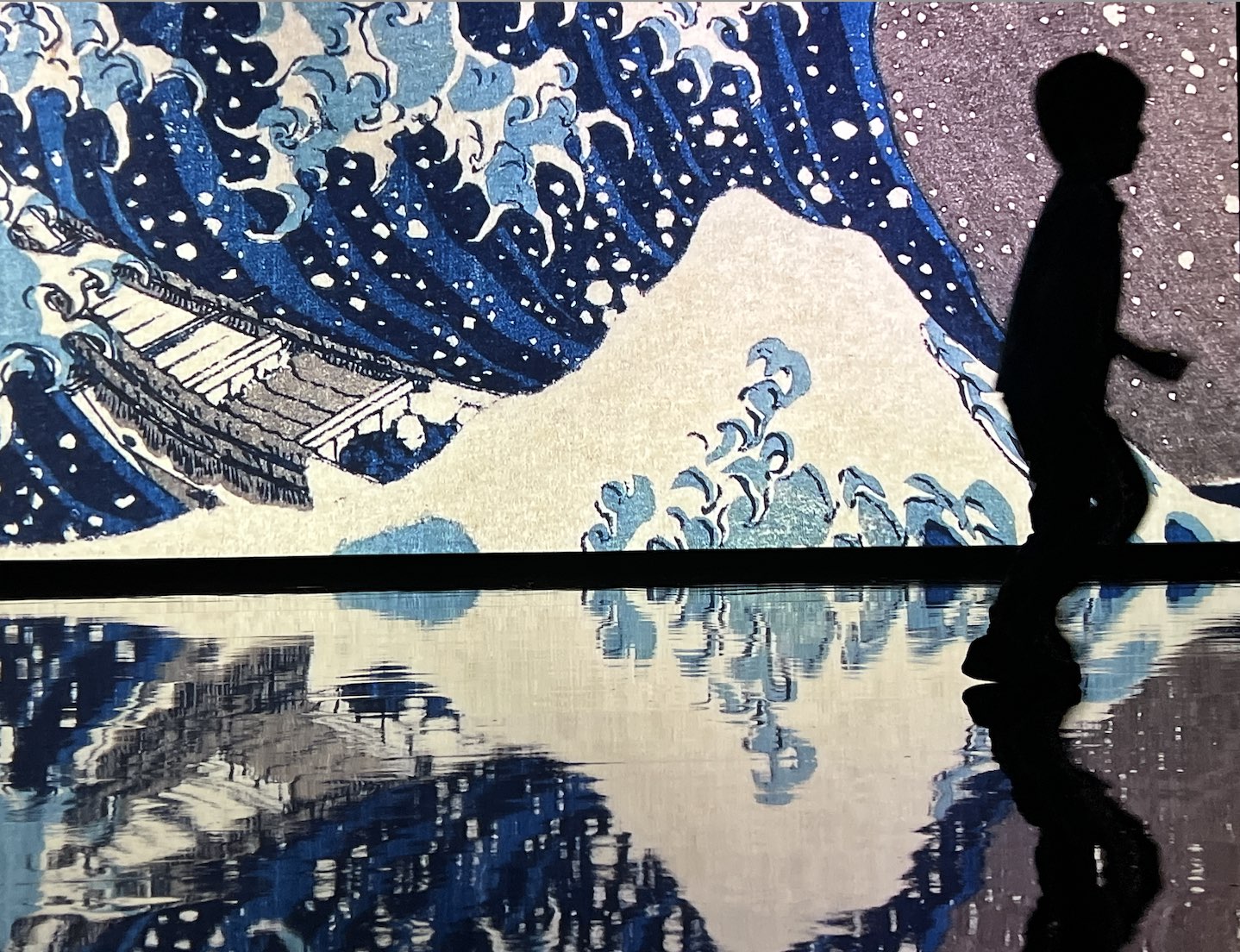
I had the great fortune that, just as I entered the exhibition, a group of children also entered with their grandfather. As with the pieces, I saw the children dance through space, sliding on the socks that we were obliged to wear inside the gallery. Childhood wonder: finding possibilities at the limit. I took a short breath, hoping that they would not notice me. The children approached the images, as though threatening to touch them. Their very bodies became mobile screens; they were inserted into the scenes thanks to blockages of light. Two of them lay on the floor while the shot of a celestial vault was reflected on it. They swam in the stars; I looked at them with the attention their performance deserved. Then the imminent moment arrived, and a guard appeared who asked the grandfather to place the children in seats, just as in unbridled momentum they were jumping on the ceramic pieces. The dancers sat down. The curtain closed. Applause. I pine for an art with soft edges.
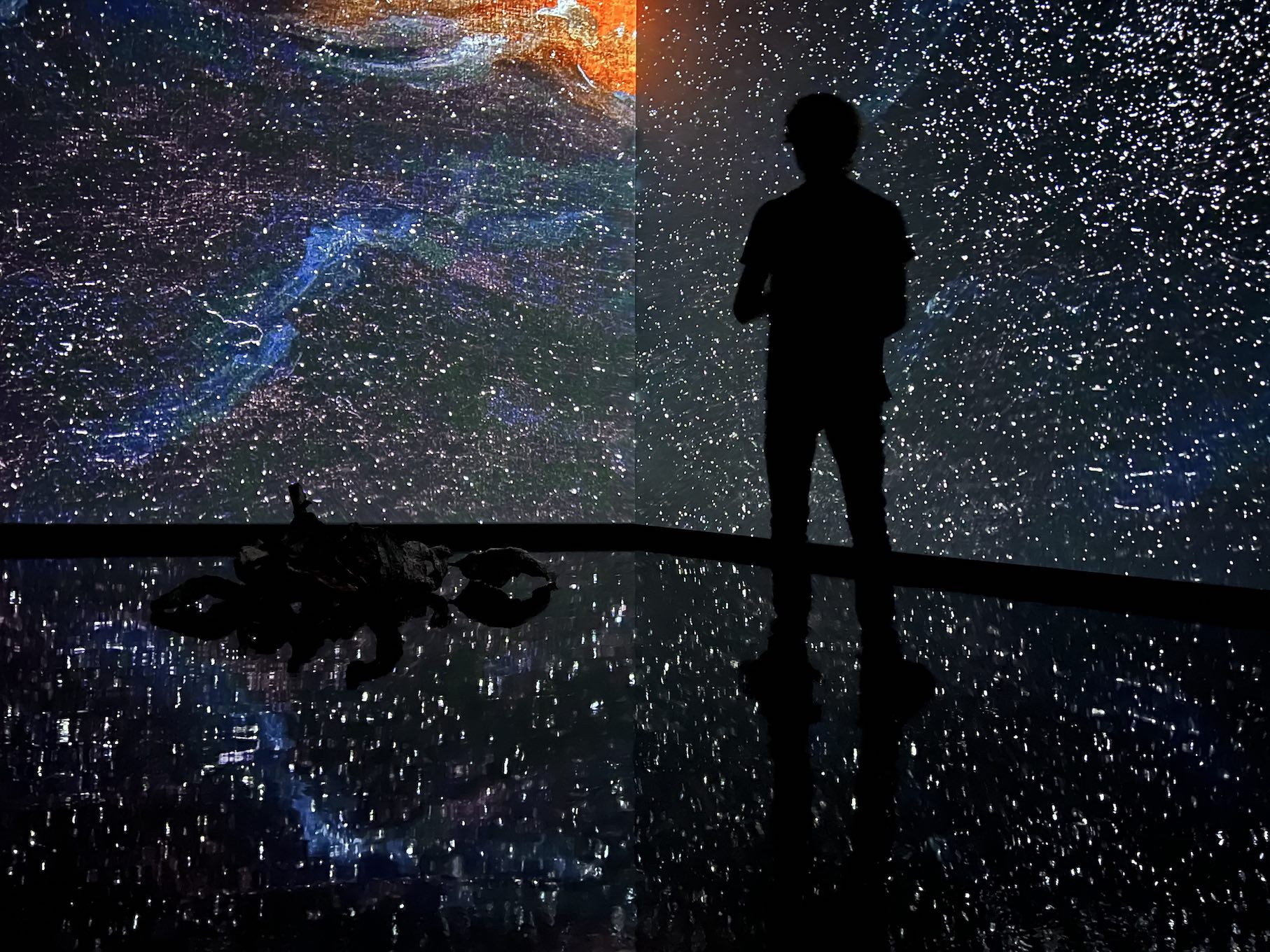
We are always wondering about the absurd, profound things we do for love. I think of that grandfather with his grandchildren, in the act of love that is patience, teaching, deciding to share a world with others. Meyenberg’s piece is an ode to life as a tribute to the force that leads us to seek the reparation that we often require following those loving actions. A bodily, emotional, physical, symbolic healing. In this world, life is the impetus of constant stumbling, one that stops and falls, stops and falls, and keeps going in order to keep wanting to stop.
Friends are the doctors of our emotional lives; Meyenberg summons a series of them to complete his piece, through music, editing, writing—everyone is part of this installation. For these affective pains we need to call up the whole army of friendships in order to help us mend the invisible pain traversing us. My friends are the paramedics of my life and the essential glues of my work. In the skin there is always a stitch following heartbreak because materially we are not the same. And to begin healing, you have to recognize that there is pain.
The exhibition Things We Do For Love will be open until December 18, 2022, at Arte Abierto, located inside Artz Pedregal.
Translated to English by Byron Davies
*1: Especially editor and filmmaker Martha Uc, musician Roderic, as well as cellist and improviser Natalia Pérez-Turner (https://arteabierto.org/things-we-do-for-love)
Published on September 7 2022